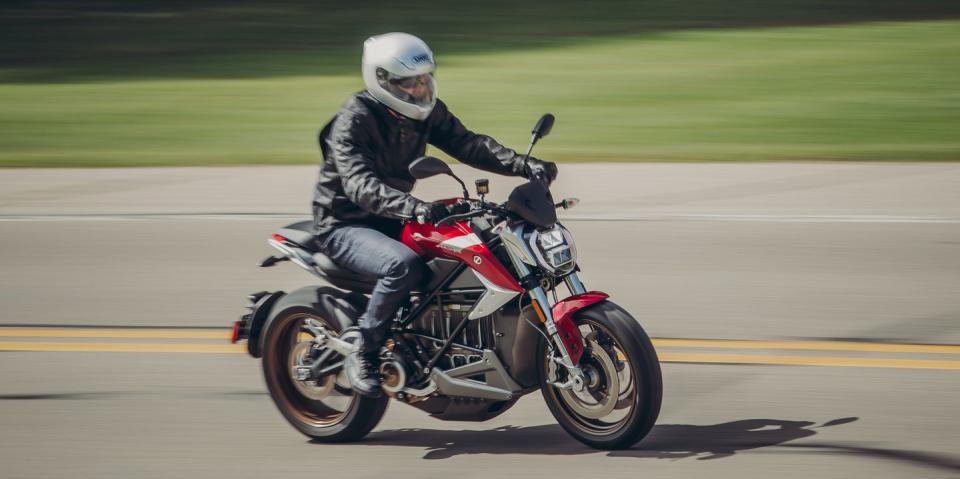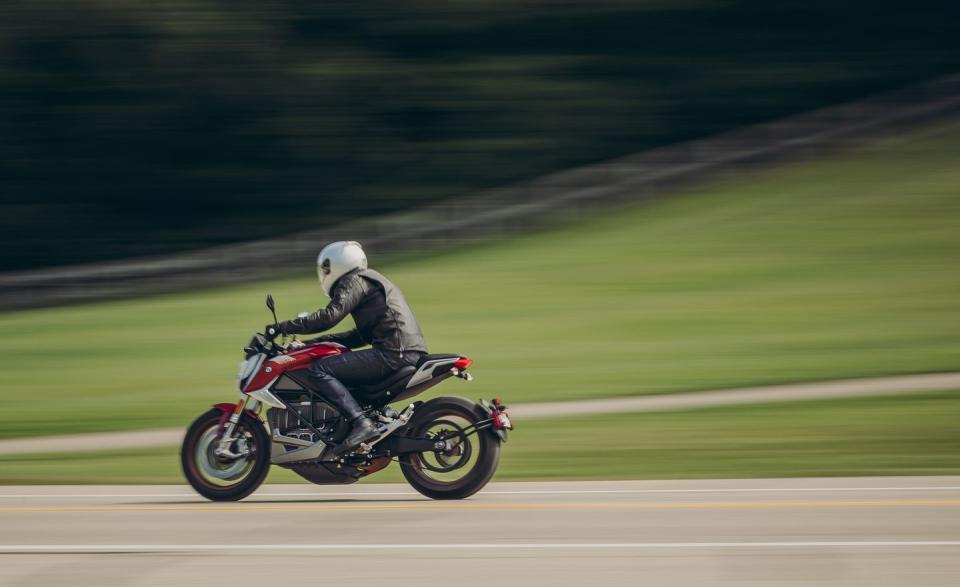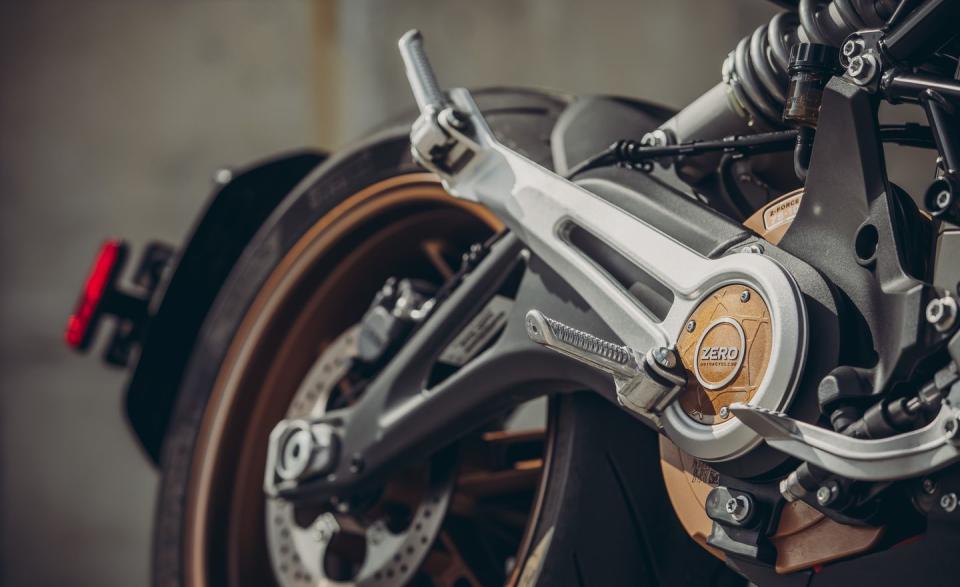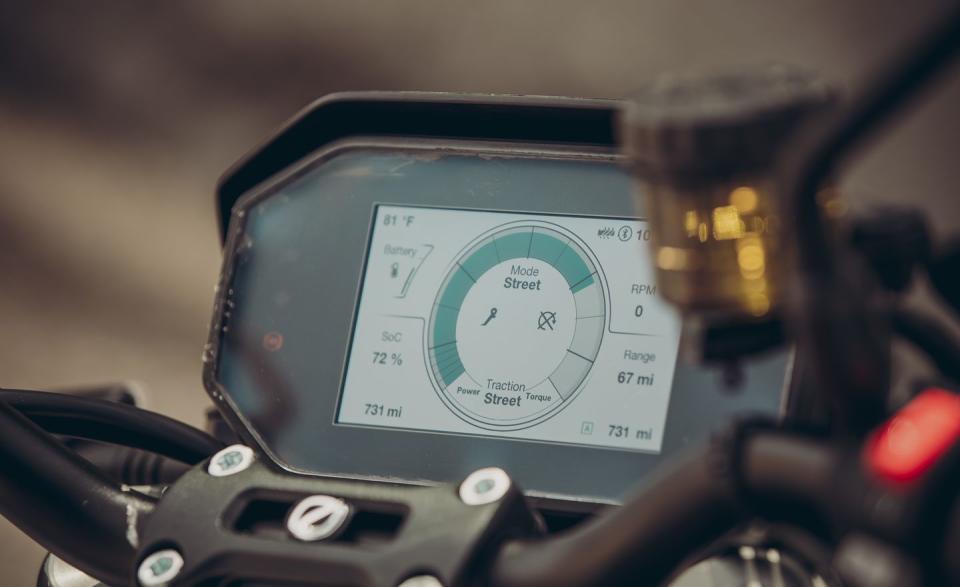The Electric 2020 Zero SR/F Reboots the Motorcycle Experience

Pin the Zero SR/F's throttle or jump out of an airplane; either way, you'll hit 60 mph in roughly three seconds with wind thundering in your ears and hot adrenaline coursing through your veins. The charms of this 110-hp electric motorcycle—uncanny quiet, immediate acceleration, velveteen power delivery—are largely similar to those of a powerful electric car. But while most electric cars are characterized by a torquey shove off the line, the SR/F is defined by how it pulls, pulls, pulls as relentlessly as gravity toward its power peak. It charges to 60 mph with the same intensity of a gas-powered sport bike closing in on 12,000 rpm.
Zero is motorcycling's Tesla, not because of its CEO's ego or a baffling stock price, but because the 13-year-old company established the electric-motorcycle benchmark that every newcomer is measured against. The number of startups and stalwarts vying in the space is just now starting to take off, headlined by the $29,799 Livewire from grizzled Harley-Davidson. Starting from $19,495, the 2020 SR/F is the Zero's newest, most powerful, and most expensive production model. A 14.4-kWh lithium-ion battery fills the space where an internal-combustion engine normally resides, the electric motor fits where the transmission typically mounts, and a shoebox-sized storage bin takes the place of the gas tank.

Easy Rider
With no clutch or shifter to occupy the rider's left hand and foot, this streetfighter is almost scooter-like in its simplicity and ease of operation. That's a boon for urban commuters, but it also frees your mind to wander: If cows become beef, and pigs beget pork, why is chicken just called chicken? On the SR/F, it can be hard to capture the all-consuming, almost-meditative focus that comes with riding a motorcycle well.
A twisty road helps to pull your attention back to the task at hand. At 501 pounds, the SR/F is heavy, but not egregiously so, and it leans into corners predictably and willingly, if not exactly eagerly. A laundry list of modern electronic aids includes antilock brakes, four traction-control settings, and Eco, Rain, Sport, and Street driving modes. You can also use a Bluetooth-connected phone to build your own custom mode, setting a speed governor, limiting power and torque, and dialing in two different regenerative-brake settings. With the neutral regeneration dialed to 35 percent, the SR/F decelerates naturally, like a combustion engine with a closed throttle whenever you unwind the right grip. The brake-regeneration setting controls the amount of energy recapture and deceleration that's activated by the initial pull of the brake lever. But that early travel behaves more like an on/off switch than a rheostat as it relates to the amount of deceleration. Our preferred configuration used the brake lever only to control the hydraulic binders.

We missed the blats and barks of hot exhaust escaping pressurized cylinders and at times felt vulnerable on a nearly silent bike while sharing the road with so many drivers relying on their ears and bumpers in place of their otherwise-occupied eyeballs. A motorcycle is the rare case where an electric vehicle needs a synthetic soundtrack. (Anything but a simulated combustion engine, please.) That would also help mask the whine of the carbon-fiber-reinforced belt driving the rear wheel, the scrape of brake discs against pads, and the occasional creak you hear at low speed. Those sounds, plus the storage bin's flimsy plastic top and the laggy thumb control that switches driving modes and activates the heated grips on the $21,495 Premium model, can make the Zero feel cheaper than its price.
On the Range
How much range does an electric vehicle need when you're going nowhere in particular? That depends how fast you're traveling, because like all EVs, the SR/F can't escape the electric-range paradox: The farther you're travelling, the faster you want to drive. But the faster you drive, the shorter the possible range. Zero claims a reach of 161 miles in city conditions, but the number nearly halves to 82 miles at a constant 70 mph. At least those ranges, and the digital display's range indicator, are realistic. In Car and Driver's 75-mph highway test, we measured a range of 70 miles. Averaging 319 MPGe over the course of our test, the SR/F shames Toyota Priuses for their gluttonous, gas-swilling inefficiency.

We found that the battery was perfectly sized for a couple hours of Saturday-morning back-road riding at speeds between 40 and 60 mph. You would have to possess the resolve of a glacier to attempt a long-distance trek though. Zero has been slow to adopt EV charging conventions, and DC fast charging isn't an option. The SR/F is the company's first motorcycle to come standard with the SAE J1772 connector that's found at every AC public charging station. A three-kilowatt charger replenishes the SR/F's depleted battery in 4.5 hours, while Premium models include a six-kilowatt unit, cutting that time to 2.5 hours. Either model also can be fitted with an additional six kilowatts of charging capability for $2300 that knocks down the charge time to less than two hours.
The SR/F's combination of high performance and remarkable efficiency is a glimpse of the future, on sale today. An electric motorcycle takes some recalibration to come to terms with the quiet, the additional weight, and the simplicity of the controls, but we're coming around to the idea. Anything that can run with a Corvette while simultaneously out-smugging a Prius is okay with us.
You Might Also Like

 Yahoo Autos
Yahoo Autos 